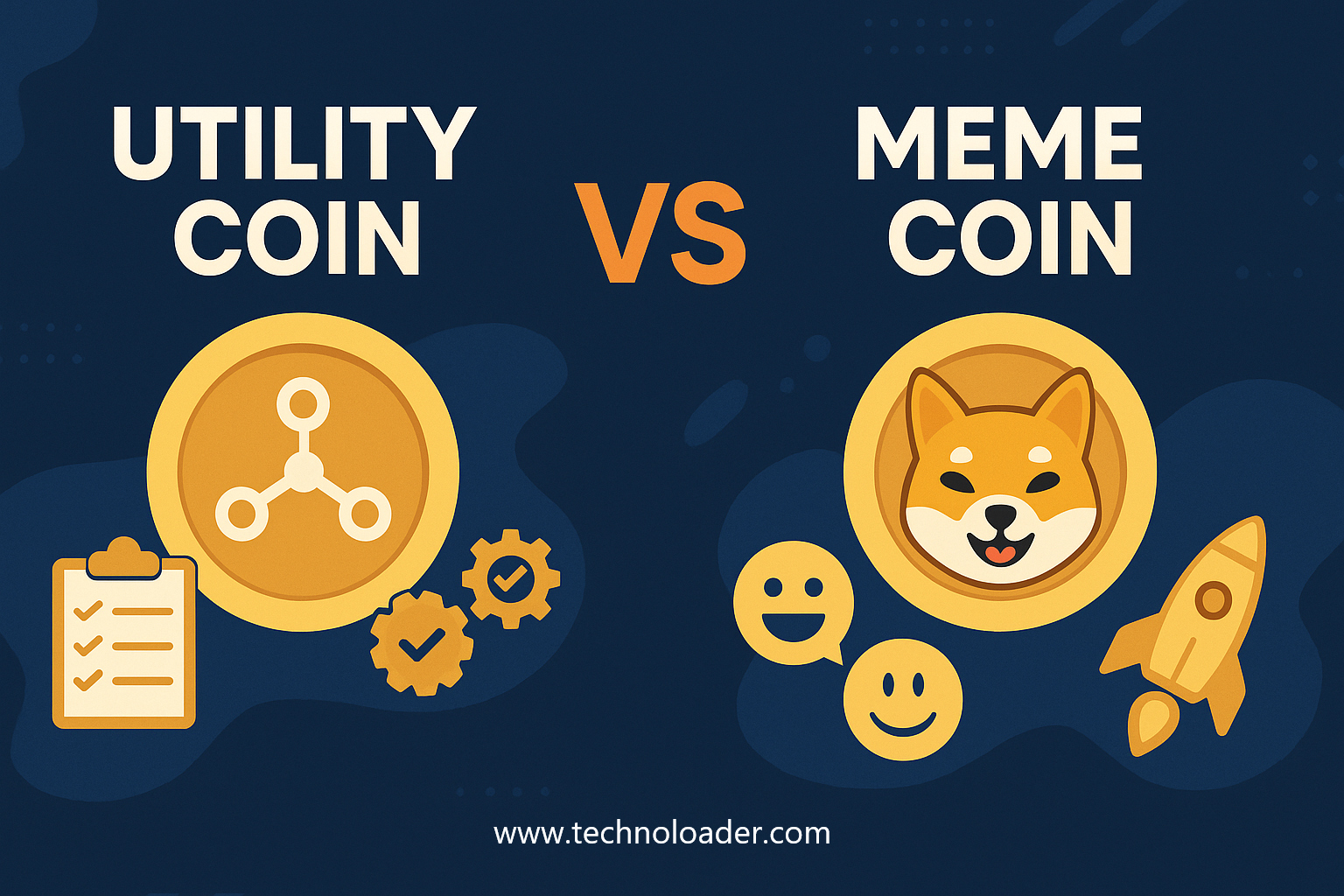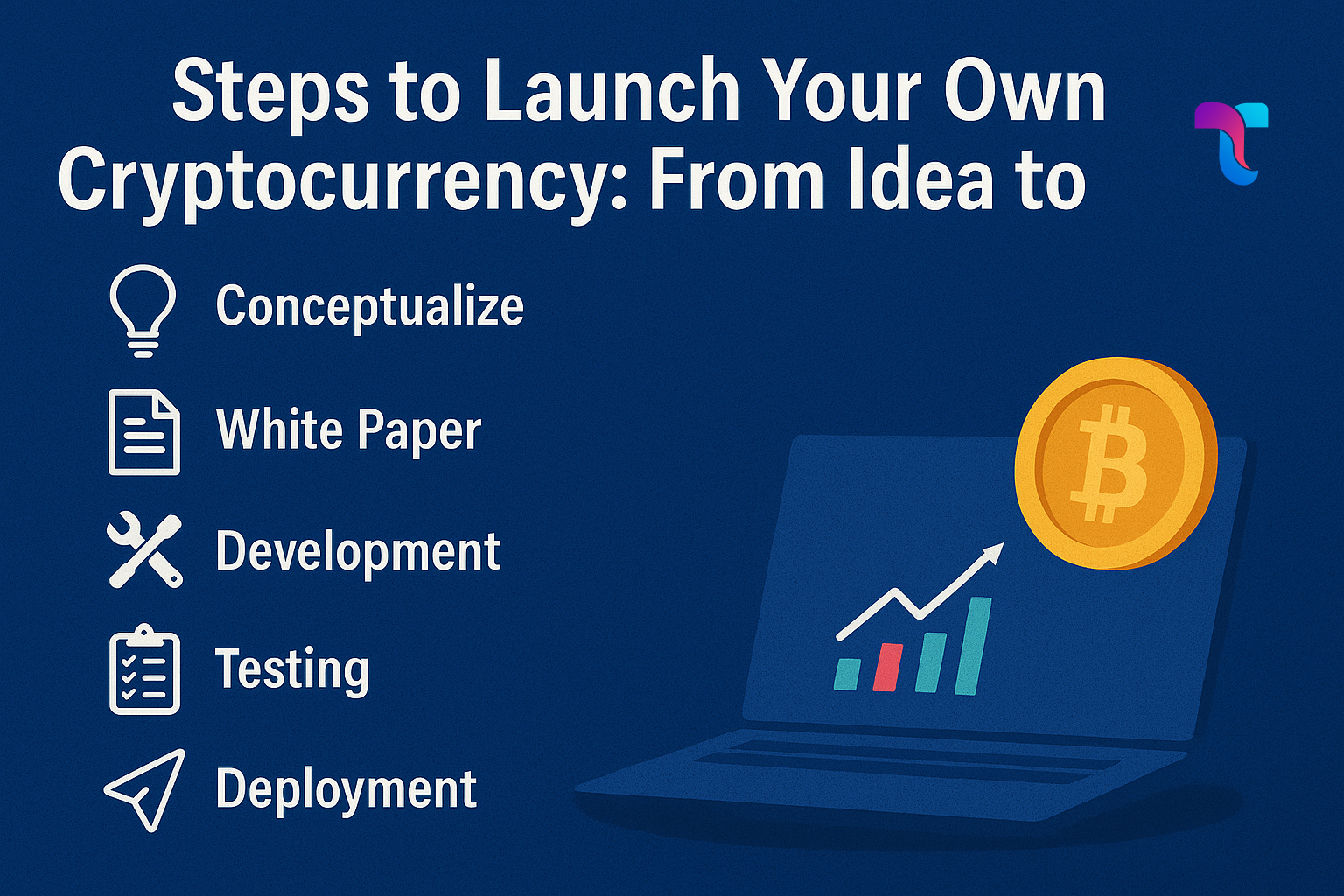Choosing Between Utility and Meme Coins: Which One Fits Your Project Vision?

In today’s rapidly expanding crypto ecosystem, building your own cryptocurrency has become more accessible but the type of coin you choose can determine its long-term success. Two of the most popular categories are utility coins and meme coins, both offering distinct value propositions.
But while one may promise real-world use cases and long-term credibility, the other often thrives on community engagement and viral hype.
Let’s break down the differences, benefits, and challenges of each to help you decide what kind of coin best suits your project goals.
What are Utility Coins?
Utility coins are built with a specific use case in mind. They are designed to serve a function within a blockchain ecosystem—whether it’s for accessing services, enabling transactions, or interacting with dApps. For example, Ethereum’s ETH is used to pay gas fees, while BNB powers Binance transactions.
When you develop a utility coin, you’re essentially creating a functional component of a platform, not just a store of value. This means you need to have a well-thought-out ecosystem in place like a decentralized application (dApp), exchange, or service-based platform where the token will be used.
These coins offer long-term stability, especially when backed by a strong development team, use case, and tokenomics. However, gaining user adoption can take time, and regulation is a bigger consideration since utility tokens often fall under legal scrutiny.
What are Meme Coins?
Meme coins, on the other hand, leverage internet culture and viral trends to gain popularity. Think of Dogecoin and Shiba Inu, tokens that started as jokes but gained massive market caps due to their loyal communities and online hype.
These coins are typically easier to launch, as they don’t necessarily need a real-world utility at the start. Their success depends on community engagement, influencer support, and social media virality. Because of their popularity and relatability, meme coins are great for rapid adoption, especially among younger and retail investors.
However, meme coins tend to be volatile and may not have long-term sustainability unless eventually backed by utilities or innovative features. Still, they offer great potential for fast growth and are often a low-entry point for crypto beginners and startups testing the market.
Choosing Between Utility and Meme Coins for Your Crypto Project
In today’s fast-evolving blockchain ecosystem, aspiring crypto entrepreneurs face a critical choice: should they create a utility token or launch a meme coin?
Both types offer distinct advantages and risks, and your decision will shape everything from your project’s long-term sustainability to its marketing strategy and community engagement. Understanding the difference between these two is essential before you begin development.
Utility coins serve a practical purpose within a blockchain ecosystem. They can be used to pay for services, unlock features, or grant voting rights in a decentralized protocol. Ethereum’s ERC-20 tokens are often designed with utility in mind—think of tokens like BNB (for paying fees on Binance) or UNI (for governance in Uniswap).
These tokens are ideal for projects that aim to build real-world use cases, ecosystems, or applications. Utility tokens require strong technical architecture, integrations with dApps, and regulatory consideration—especially if they’re likely to be classified as securities.
On the other hand, Meme coins are driven primarily by community hype, pop culture, and social media virality. These tokens such as Dogecoin or Shiba Inu, often lack intrinsic utility at launch but gain traction due to humor, relatability, and loyal online communities.
Meme coins are easier to launch, with a focus on branding and timing rather than complex functionalities. However, they tend to be short-term investments unless developers later add real utility or ecosystem features.
The right choice depends on your goals, budget, and target audience. If your aim is longevity and utility, building a token with practical applications is ideal. If you’re targeting fast adoption through viral trends and low development cost, meme coins may be the better fit.
Key Differences: Utility Coin Vs Meme Coin
| Feature | Utility Coins | Meme Coins |
| Purpose | Offers specific use cases within platforms | Primarily for fun, hype, and community trends |
| Development Complexity | High (requires integration and smart contracts) | Low (often simple tokens withoutbackend logic) |
| Regulation Risk | High (may be seen as securities) | Lower, though still subject to scrutiny |
| Community Dependency | Moderate (community plus functionality) | High (relies heavily on viral support) |
| Long-term Viability | Higher if built well | Depends on sustained hype or added utility |
| Monetization Opportunities | Service fees, staking, governance | Token trading, NFT integrations, donations |
| Branding Importance | Functional branding needed | Pop culture branding essential |
As shown in the table above, utility coins demand more effort but offer more stability and potential for institutional acceptance. Meme coins, while riskier, can be launched faster and attract large followings through clever marketing and relatability.
Cost Comparison: Meme Coin vs. Utility Coin Development
One major factor influencing your decision will be cost. While meme coins typically require fewer resources at the beginning, utility coins often demand more complex development and compliance efforts. Here’s a table comparing average development costs:
| Feature | Meme Coin Development | Utility Coin Development |
| Smart Contract Creation | $1,000 – $3,000 | $3,000 – $8,000 |
| Tokenomics & Whitepaper | $500 – $2,000 | $2,000 – $5,000 |
| Legal Compliance (Optional) | $500 – $2,000 | $5,000 – $15,000 |
| dApp/Platform Integration | Not mandatory | $10,000 – $50,000+ |
| Wallet & Exchange Integration | $1,000 – $3,000 | $3,000 – $6,000 |
| Community Building & Marketing | $2,000 – $10,000 | $5,000 – $15,000+ |
| Total Estimated Cost | $5,000 – $20,000 | $25,000 – $90,000+ |
As shown, Meme coin development can be significantly more affordable at the start, allowing you to test your brand and build a loyal community quickly. Utility coin development is more resource-intensive, but offers long-term value and scalability, especially if you’re building a serious platform or ecosystem.
Final Thoughts: Which Should You Choose?
If you are launching a serious platform like a blockchain app, DeFi service, or NFT marketplace, a utility coin will give you the functional backing you need. It adds credibility and enables real engagement within your ecosystem.
But if your primary goal is to build a community, gain viral traction, or test the waters of the crypto space, a meme coin may be the faster, leaner route. Many founders even start with a meme coin and pivot toward utility by integrating real-world functions later.
The right choice depends on your vision, audience, resources, and risk appetite. Regardless of the path you choose, partnering with a seasoned crypto development company like Technoloader ensures that your project is technically sound, legally compliant, and market-ready.
Let them help you turn your coin idea into a powerful crypto brand, be it meme or utility.




